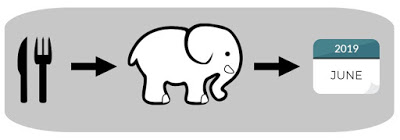There are people who believe that creativity cannot be taught. To them, creativity is an “either you have it or you don’t” proposition–Carol Dweck (2016) would say that such people have a fixed mindset about an individual’s creativity. It is likely that those same people believe that they themselves have little or no creative talent, and that there is little point in attempting to develop or strengthen their creative skills.
Let’s assume for a moment, with apologies to Dweck, that these people are correct, and that creativity is not something that can be changed or developed. Even if that is the case (which I do not necessarily believe, but let’s accept it for now), it doesn’t follow that trying to develop one’s creative skills is a futile exercise.
People who subscribe to this fixed-mindset concept of creativity are confusing creativity with the creative process. Creativity is spontaneous and unpredictable; it’s Keith Richards dozing off while noodling on his guitar, and at some semi-conscious point creating what would become the iconic opening guitar riff to “Satisfaction”–fortunately for the music world, he was recording his practice session and discovered the riff the next morning (Richards, 2010). The creative process, on the other hand, is Richards and the other members of the Rolling Stones taking those opening notes and, through collaborative revision and expansion, turning them into one of the most recognizable rock songs of all time. There would be no song without the initial burst of creation, but without the work put into the song, the riff would just be another collection of notes laid down on tape and likely soon erased.
John Kotter (2013) explains that developing a sense of urgency is vital to implementing change, and to helping members of an organization understand the “why” behind that change. It’s my belief that helping people explore and develop their skills with the creative process will help them understand why that process is so pivotal in their development, and why such development is crucial to them meeting the goals of both their organization and themselves.
Below are the Why, How, and What statements related to my innovation plan.
Whether producing that initial spark of creativity is something that can be taught is of far less importance than learning to recognize and fan that spark whenever and wherever it appears. This process is how enduring works of art are created, how complicated problems are solved, and how people learn to help themselves grow and develop. It is vital that even people who don’t see themselves as having great amounts of innate creativity–especially people who don’t see themselves as having great amounts of innate creativity–learn to recognize how employing the revision and collaboration of the creative process makes the question of how much or how little creativity one starts with almost meaningless. One can build from almost anything.
REFERENCES
Dweck, C. S. (2016). Mindset: The new psychology of success. New York, NY: Ballantine Books.
Kotter, J. (2013, August 15). Leading change: Establishing a sense of urgency. Retrieved from https://www.youtube.com/watch?v=2Yfrj2Y9IlI&feature=youtu.be
Richards, K. (2010). Life. New York, NY: Little, Brown and Company.




